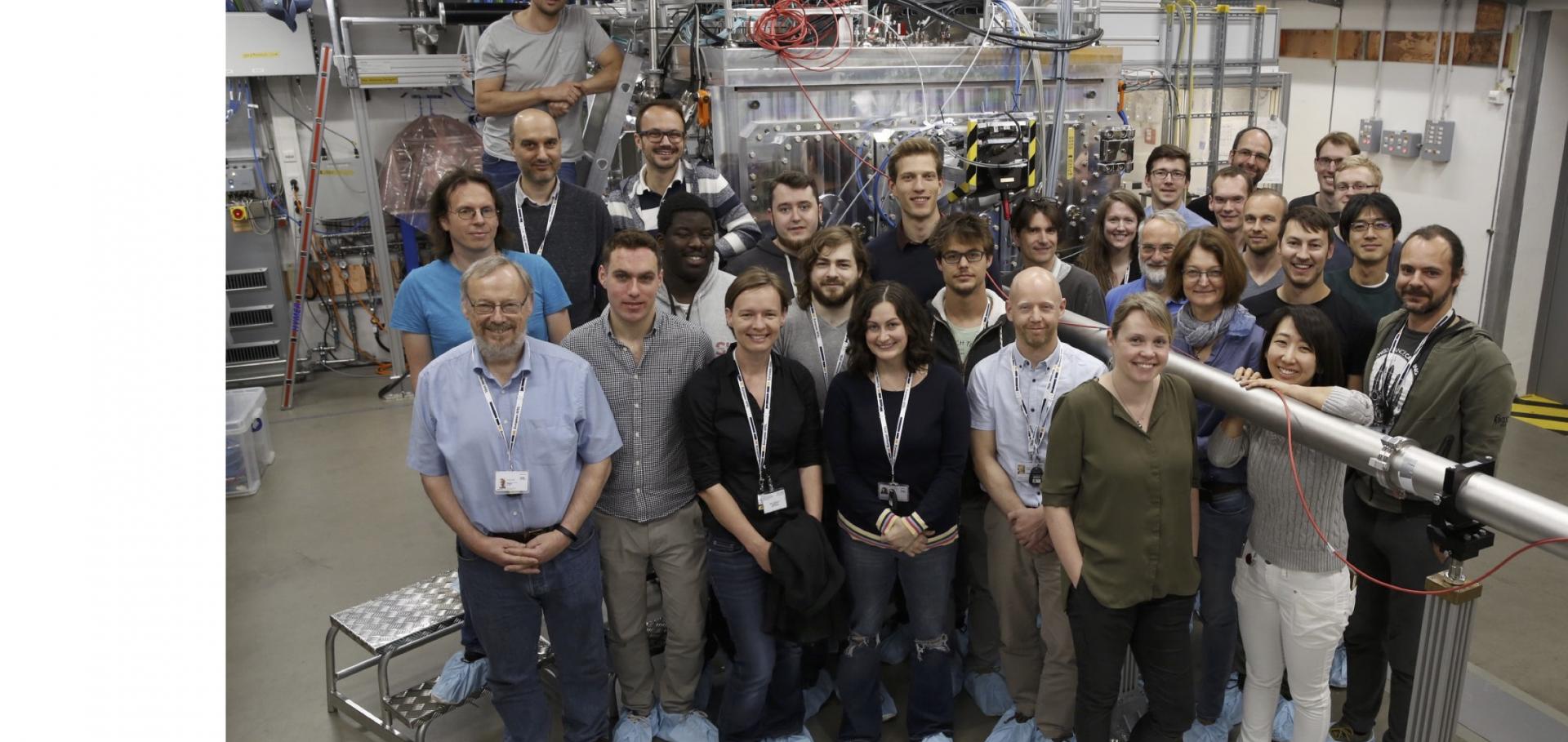Shock-driven amorphization and melting in Fe2O3
Physical Review B American Physical Society 111:2 (2025) 024209
Abstract:
We present measurements on Fe2O3 amorphization and melt under laser-driven shock compression up to 209(10) GPa via time-resolved in situ x-ray diffraction. At 122(3) GPa, a diffuse signal is observed indicating the presence of a noncrystalline phase. Structure factors have been extracted up to 182(6) GPa showing the presence of two well-defined peaks. A rapid change in the intensity ratio of the two peaks is identified between 145(12) and 151(12) GPa, indicative of a phase change. The noncrystalline diffuse scattering is consistent with shock amorphization of Fe2O3 between 122(3) and 145(12) GPa, followed by an amorphous-to-liquid transition above 151(12) GPa. Upon release, a noncrystalline phase is observed alongside crystalline α-Fe2O3. The extracted structure factor and pair distribution function of this release phase resemble those reported for Fe2O3 melt at ambient pressure.Shock-driven amorphization and melting in
Physical Review B American Physical Society (APS) 111:2 (2025) 24209
Abstract:
<jats:p>We present measurements on <a:math xmlns:a="http://www.w3.org/1998/Math/MathML"><a:mrow><a:msub><a:mi>Fe</a:mi><a:mn>2</a:mn></a:msub><a:msub><a:mi mathvariant="normal">O</a:mi><a:mn>3</a:mn></a:msub></a:mrow></a:math> amorphization and melt under laser-driven shock compression up to 209(10) GPa via time-resolved x-ray diffraction. At 122(3) GPa, a diffuse signal is observed indicating the presence of a noncrystalline phase. Structure factors have been extracted up to 182(6) GPa showing the presence of two well-defined peaks. A rapid change in the intensity ratio of the two peaks is identified between 145(12) and 151(12) GPa, indicative of a phase change. The noncrystalline diffuse scattering is consistent with shock amorphization of <c:math xmlns:c="http://www.w3.org/1998/Math/MathML"><c:mrow><c:msub><c:mi>Fe</c:mi><c:mn>2</c:mn></c:msub><c:msub><c:mi mathvariant="normal">O</c:mi><c:mn>3</c:mn></c:msub></c:mrow></c:math> between 122(3) and 145(12) GPa, followed by an amorphous-to-liquid transition above 151(12) GPa. Upon release, a noncrystalline phase is observed alongside crystalline <e:math xmlns:e="http://www.w3.org/1998/Math/MathML"><e:mrow><e:mi>α</e:mi><e:mtext>−</e:mtext><e:msub><e:mi>Fe</e:mi><e:mn>2</e:mn></e:msub><e:msub><e:mi mathvariant="normal">O</e:mi><e:mn>3</e:mn></e:msub></e:mrow></e:math>. The extracted structure factor and pair distribution function of this release phase resemble those reported for <g:math xmlns:g="http://www.w3.org/1998/Math/MathML"><g:mrow><g:msub><g:mi>Fe</g:mi><g:mn>2</g:mn></g:msub><g:msub><g:mi mathvariant="normal">O</g:mi><g:mn>3</g:mn></g:msub></g:mrow></g:math> melt at ambient pressure.</jats:p> <jats:sec> <jats:title/> <jats:supplementary-material> <jats:permissions> <jats:copyright-statement>Published by the American Physical Society</jats:copyright-statement> <jats:copyright-year>2025</jats:copyright-year> </jats:permissions> </jats:supplementary-material> </jats:sec>Nonthermal solid-solid phase transition in ferromagnetic iron
Physical Review B - Condensed Matter and Materials Physics American Physical Society 110 (2024) 214434
Abstract:
We posit the existence of a nonthermal phase transition in iron, driven by a loss of ferromagnetic ordering on ultrafast timescales with increasing electron temperature. The transition corresponds to a solid-solid BCC to FCC phase transformation and takes place at an electron temperature of 0.62 eV while the ion lattice remains near room temperature. The BCC structure initially undergoes phonon softening during the magnetic transformation, followed by a solid-solid phase transition to the FCC structure, and a subsequent hardening of phonon modes. We present a detailed physical picture of the process, supported by finite-temperature density functional theory simulations of the phonon dispersion curves, electronic density of states, and thermodynamic free energy.The study of shock-compressed condensed matter by use of advanced light sources
AIP Conference Proceedings AIP Publishing 3066:1 (2024) 440001
Exploring relaxation dynamics in warm dense plasmas by tailoring non-thermal electron distributions with a free electron laser
Physics of Plasmas AIP Publishing 31:8 (2024) 082305


